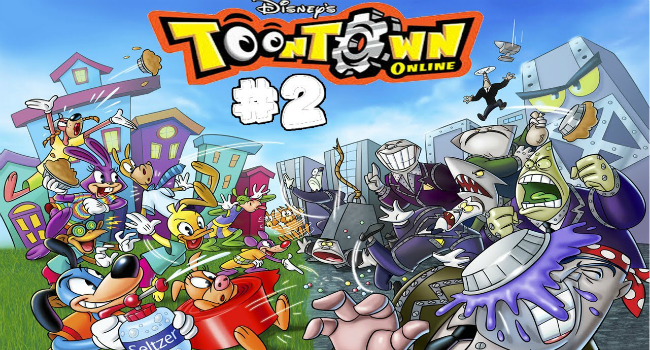Even before I had started working in social media and community management, I knew how important it was to listen to users and your target audience to get better insights for product improvement. I have two great examples that I usually talk about during my classes about social media, especially when I want to highlight the importance of “Listening” in this field.
In 2006, I was responsible for a Disney product, called Toontown Online, a MMORG (massively multiplayer online role-playing game) platform. The first thing that I focused on when I started working on it, was gathering information about the users, in order to understand who they were and what they wanted. Unfortunately, at the time, the company didn’t have enough good data about them, since they were mostly children and the people who were paying for the product were their parents.
Instinctively, I went to find out where they were talking about the product. The product was being discussed on Orkut, a very popular Google social networking site at the time. I was able to gather huge amounts of information and feedback about the product there, just reading the posts and the comments. I not only started to understand the users, their behaviour and their needs, but I was also able to find out about the bugs of the game, which I wouldn’t have known before unless someone complained to customer service.

Gamers are a really active community. So I knew that I should not only listen but also participate in the conversations. Something important here is to always be honest and transparent. I always introduced myself as the professional responsible for the product and let them know I was willing to listen to them and improve the product for them. And what happened then was beautiful: the community started letting me know when an issue was happening inside the game, and I could fix it quickly with the team.
Although Disney was a little bit afraid of it, I decided to start up a blog for comments. My idea was to create an official channel to let the users interact with us and publish our main product updates. And what happened then was beautiful again: I had dozens of heavy-users “working with me” letting me know about bugs and answering questions of other users on the comments. Even better they were also spreading the word over other social media channels about updates and promotions.
The result of doing great social media listening and community management was definitely a substantial increase in customer satisfaction and in the number of subscribers. Happier customers, happier business.

Another example that I usually mention is when I had a curtain factory as a client. For every project that I do, even for social media, product management or UX, my first task is always to understand the users, their behaviour, their needs and pains. And the best way to do that is always listening and observing.
I remember the company didn’t have solid investment in online presence. At the time (2011) people were a little bit sceptical about the power of social media. One of their goals was to be better known among potential end-user clients. They already had direct clients, the decoration stores and other shops that were selling curtains. They argued with me that they were a B2B company and they didn’t understand how social media could help them to improve their Business.
One of the first things that I ask my clients when I start a project like that is to share with me their marketing and communication plan and a list of competitors. They were so sure that time that they had listed all their competitors in the country, from different regions. They were surprised when I showed them, after a thorough working of social media listening, that they had other many strong competitors which were not on the list but were heavily mentioned through the social media channels.
Besides that, we also understood some things about the customer’s behaviour that the company already had a sense of it, but were never sure of: curtains are usually one of the last things that people who are decorating their homes think about. When they start thinking about it, is seems be a really painful decision “how do I match the curtains with the current decoration (couch, rug etc)?”, “Should it be a long or short curtain? Cover only the window or the whole wall?”. All these questions gave us an idea about which kind of content the company could produce to get the users to engage with the brand.
Other painful point about buying a curtain is the installation. The company had developed one of the most innovative and easiest ways for installation (a great asset for selling) and, after the social media listening, they realised they were not communicating it well at all.
Another great find about the customers behaviour and needs was that they hated the “blackout curtains” available on the market. “They are ugly”, said most of the users. The coincidence here was that the company’s R&D department had had a brainstorm about possibly developing a more beautiful blackout curtain, but had discarded the idea in place of other “more important” features (without listening the customers). When they understood the real potential opportunity, thanks to social media listening, they got it straight into their road map.
Personally, for me, it was fascinating to be able to show a company that were sceptical about the power of social media what it could actually do for their business.

I truly believe that every company, no matter the size, product or service, should put a lot of thought into social media and online Communities. I had a great teacher at UC Berkeley, Michael Brito, who used to say that social media should actually permeate every department in a company. He talks about it in his book “Smart Business, Social Business: A Playbook for Social Media in Your Organization”. Speaking of teachers and books, I also had an amazing teacher at UCLA, Beverly Macy, who used to highlight the relevance of social media listening, and talked about it in her book “The Power of Real-Time Social Media Marketing: How to Attract and Retain Customers and Grow the Bottom Line in the Globally Connected World”.
The thing here, I usually say, is to do a deep dive into your users’ and potential users’ online universe and be open to actively listening to them. Start seeing online users and clients as an important part of your business development. Use social media listening and community management to improve your business, service or product, I usually follow 6 steps:
1. Do initial research
I like to start with global research on Google to figure out what has been said about the company or the brand. After that, I start researching keywords related to the business, the product, and/or service. It is important to understand that these keywords should be listed from a user point of view. I like to come up with a keywords map using a mindmap format. I like using post-its on a whiteboard or a wall. But you can use online tools such as Mindmup, Mindmeister, Wisemapping, Coogle.
Doing this initial research and listening to your users, you will be more and more able to understand the ways and the words used to describe you product or your competitor’s product.

2. Research your competitors (and find others)
You probably already know (or think you know) your competitors. Research them, see what people are saying about them, we can learn A LOT from other’s mistakes and successes and, believe me, people will talk about it online. You will probably see users mentioning other competitors that you may not even have heard about. When you start researching the key-words from your mindmap you will probably find even more companies. List them, analyse them.
3. Use Listening tools to track conversations
There are tons of social media listening tools on the market. Freemium, paid, free, doing different kind of monitoring. It is important to notice that these tools appear and disappear quickly, so it is good to research new tools from time to time.
Keyhole tracks URLs, hashtags, keywords and @usernames on Twitter and Instagram. It collects data and posts in real-time, offering historical data separately or in advanced plans.
You can use Social Mention to brand mentions and interactions also finding brand’s strength (how often it’s being discussed), the passion of the posting (how likely someone will repeat the mention), the sentiment (positive to negative) and the reach (measure of influence). Learn the top keywords, users, hashtags and sources as well.
Mention visualizes your online presence and allows you to monitor millions of sources in real time and in 42 languages.
Type a keyword into Addict-o-Matic’s search bar to scan platforms such as YouTube, WordPress and Bing News for mentions.
Brandwatch monitors and collects data from 80 million sources. These include blogs, forums, review sites, news sources and popular social platforms such as Facebook.
One of my favourites, Talkwalker tracks keywords from almost all major social platforms, as well as blogs, forums and online news websites. The tool also calculates metrics surrounding Twitter and Facebook conversations.
I also like using Hashtracking to track hashtags on the different social media platforms.
4. Participate in the conversation
If you’ve been listening to users for a while in an open way, you might be ready to participate in the conversations on social media. But, please, make sure this participation is to offer solutions to your users or potential users. Don’t try to push your products or services in a conversation without context, don’t force a situation. I am not saying you shouldn’t use social media platforms to sell or promote your products and service, but this is a sensitive topic that deserves a whole article (or a series of articles). What I am trying to say here in this stage is: participate in social media conversations in an honest and transparent way (as I did for Toontown), be truly interested in understanding the user issues and then offer solutions and make improvements.
5. Let your users help you
Don’t take criticism personally, online users can be too honest and a bit aggressive sometimes. But if they understand that your intention is truly to help, they will be ready to give all the feedback you need. Let the users help you. The more they talk, the better your insight will be, not only for fixes and improvement, but also to innovate and develop new features that you might not have even thought about before.
6. Improve and give updates
One important thing is not only to implement the improvements, but communicate it, and be thankful to your community. If your users and potential users notice that their feedback was noted they will be willing to keep helping you more and more. They will feel they are important assets in the process. Let them feel part of it. Keep an open conversation with them, keep monitoring and listening.
I hope these stories and tips can help you see social media not only as a communication and marketing tool, but also a brilliant way to improve your product and make your customers and users happy and feeling like they are a relevant part of the process. And if you have any stories about how you already do this, please, do not hesitate in sharing it with us. Looking forward to listening you! :)